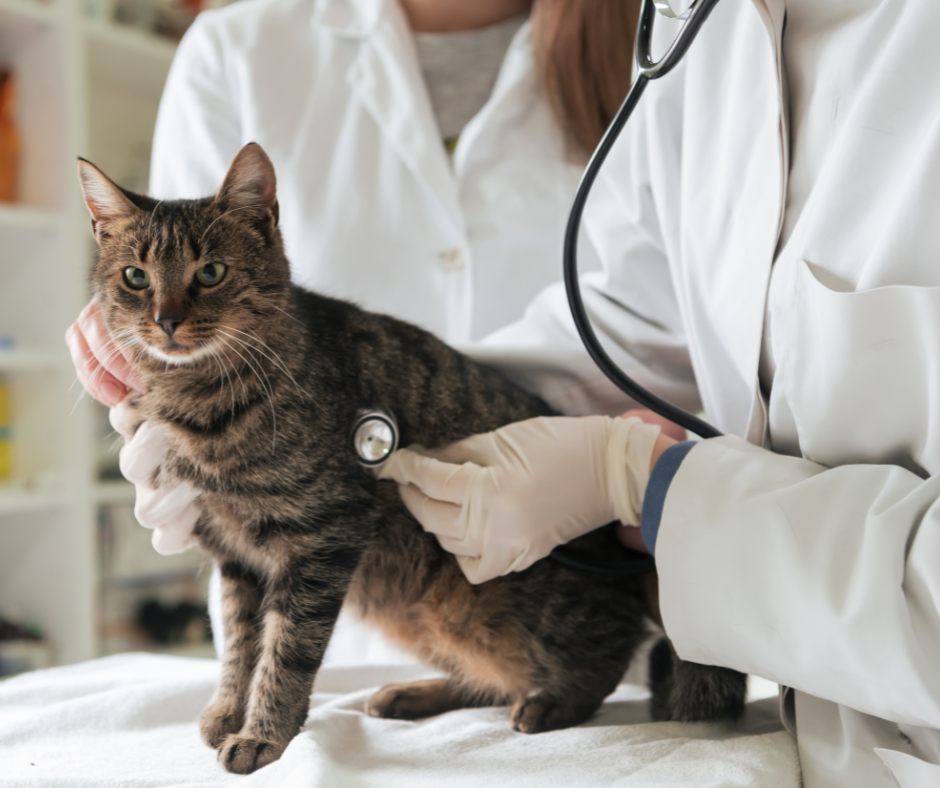The Power of the Pulse: What Your Pet’s Pulse Can Reveal About Their Heart and Circulation
Checking your pet’s pulse might seem simple, but it can provide a wealth of information about their heart, circulation, and overall health. According to a study highlighted in Clinician’s Brief, by carefully feeling and assessing the strength, rate, and rhythm of the pulse, veterinarians can detect early signs of shock, arrhythmias, and other serious conditions—sometimes before they show up on machines.
In this blog, Coast to Coast Cardiology delves into this study and breaks down the importance of pulse palpation, how it’s done, and what different pulse qualities can mean for your pet’s health.
Why Pulse Palpation Matters
Palpating (feeling) the pulse helps assess how well blood is circulating through the body. It can give important clues about:
- Heart function and rhythm
- Blood pressure status
- Signs of early shock or cardiovascular distress
A strong, steady pulse that matches each heartbeat typically indicates good cardiac output and healthy circulation. However, a normal pulse doesn’t always rule out early problems, especially in pets compensating for underlying shock or illness. That’s why pulse palpation is just one piece of the larger diagnostic puzzle.
Where to Feel for Pulses
- Femoral Pulse: Found in the inner thigh area (femoral triangle), this is the most commonly checked pulse.
- Dorsal Pedal Pulse: Located on top of the paw near the ankle (between the second and third toes), this pulse can help detect low blood pressure. If this pulse disappears, it may indicate dangerously low blood pressure (hypotension).
To get the most accurate picture, both sites are often checked while listening to the heart.
What Pulse Rate and Rhythm Tell Us
Pulse rate—the number of beats per minute—varies depending on species, size, activity, and stress level. However, consistently slow (bradycardia) or fast (tachycardia) pulses can point to heart problems or systemic issues.
The rhythm of the pulse is equally important. Some common findings include:
- Respiratory Sinus Arrhythmia: A normal variation where the pulse speeds up with breathing in and slows with breathing out—common in dogs, rare in cats.
- Irregular Pulses: These could indicate arrhythmias like atrial fibrillation or tachycardia, which may require further testing like an ECG.
Pulse Strength and What It Means
The quality or character of the pulse—how it feels under your fingers—can give valuable insights into what’s happening inside the body:
1. Bounding (Hyperkinetic) Pulses
- Snappy, forceful, with a quick rise and fall.
- Seen with fever, excitement, anemia, heart valve problems, or early shock.
2. Thready Pulses
- Faint and difficult to feel, like a thin thread.
- A warning sign of worsening circulation, mild to moderate shock, or blood loss.
3. Weak Pulses
- Weaker than normal, often with a rapid rate.
- May signal advanced heart disease, cardiogenic shock, or severe hypovolemia.
4. Absent Pulses
- No pulse detected.
- Indicates severe circulatory collapse, embolism, or cardiac arrest.
Putting It All Together
Palpating the pulse is a quick, non-invasive way to check for early warning signs of cardiovascular problems, but it’s just one part of a full evaluation. If any abnormalities are detected—whether it’s the pulse quality, rhythm, or rate – additional tests like blood pressure measurement and ECG are essential.
Even pets with seemingly normal pulses can have underlying problems, so other signs like gum color, capillary refill time, mental alertness, and body temperature should always be considered.
The Takeaway:
By feeling for and interpreting the pulse, veterinarians can gather critical information that helps guide treatment and monitor response to therapy.
If you have any worries about your pet’s heart health, come see us! At Coast to Coast Cardiology, we have 12 distinct locations, but we deliver on one goal no matter what: treating the patient, not just the signs. To schedule an appointment, contact us online or call 844-582-3827 today.





